Anryton (MOL) Staking Calculator
Estimate Your MOL Staking Rewards
Calculate potential rewards based on current Anryton (MOL) price and estimated APY. Remember: low liquidity and high volatility may affect actual returns.
Estimated Annual Rewards
Ever wondered what makes a crypto token stand out in a sea of thousands? Anryton (MOL) is a utility token designed for a very specific niche - secure, privacy‑first storage of genetic and other sensitive data. While most coins chase mass adoption, Anryton bets on quantum‑ready security and a cultural twist that reflects its origins.
What the token actually does
At its core, the MOL token lets users pay transaction fees, stake the network, and participate in governance decisions. Staking rewards come from the block‑production process, and voting power is proportional to the amount of MOL locked in the protocol. The token isn’t marketed as a traditional investment; the official disclaimer stresses it’s not a security, which limits its availability in jurisdictions like the United States and the United Arab Emirates.
Technical backbone - why "quantum‑ready" matters
The blockchain behind Anryton mixes several well‑known components. The base framework is Cosmos SDK, a modular toolkit that makes it easy to build interoperable Layer 1 chains. On top of that, the network runs an Ethereum Virtual Machine (EVM) compatible layer, so developers can write smart contracts in Solidity and connect with familiar tools like MetaMask.
Consensus is achieved via Tendermint Core, delivering fast finality and high throughput. What truly differentiates the platform is its use of lattice‑based cryptography for quantum resistance. In theory, this cryptographic family can withstand attacks from future quantum computers, a security promise that most mainstream chains don’t claim.
DNA NFTs - the most unusual use‑case
Perhaps the strangest feature is the DNA NFT‑based Digital Data Storage Wallet. Users can mint an NFT that represents a whole‑genome sequencing file, then store that encrypted file on the chain. The idea, championed by founder Dr. Anmol Kapoor, aims to give individuals control over their genetic data while preventing misuse by third parties.
In practice, the wallet encrypts the genome with the lattice‑based scheme, then anchors the ciphertext to the blockchain. Only the holder’s private key can decrypt the data, making the solution attractive for healthcare providers that must comply with strict regulations like HIPAA.
Market reality - price, volume, and exchange exposure
As of October 1 2025, the token trades around $0.0865 USD per MOL with a 24‑hour volume just under $3,100 USD. All that activity happens on a single exchange - XT.com. Major platforms like Binance, Coinbase, and Kraken list it as “not listed.” The limited liquidity explains the wild price swings: a 30‑day change of over 3,000 % and a 7‑day change of +23 % that far outpace the broader crypto market.
These numbers hint at a classic low‑liquidity scenario where even modest trades can move the price dramatically. For anyone considering a purchase, the lack of depth means you should expect slippage and be prepared for rapid price corrections.
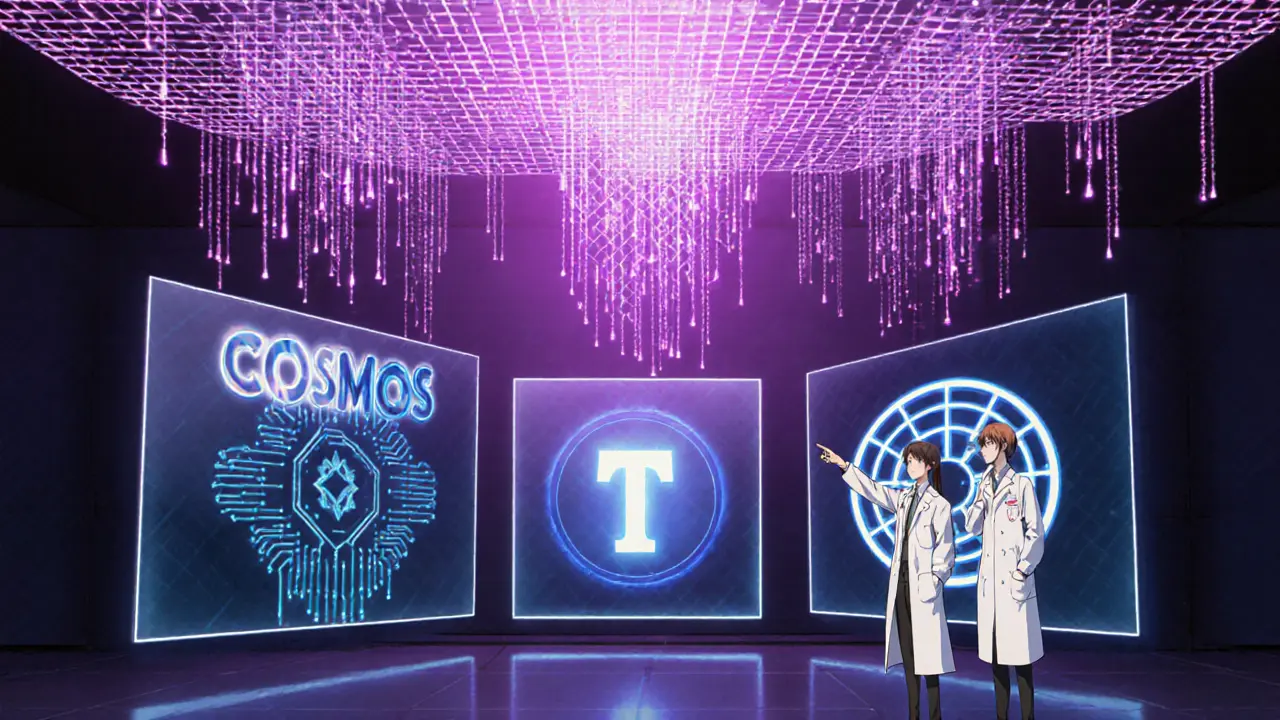
How Anryton stacks up against the competition
| Feature | Anryton (MOL) | Ethereum | Filecoin |
|---|---|---|---|
| Consensus | Tendermint (BFT) | Proof‑of‑Stake (Ethereum 2.0) | Proof‑of‑Replication + Proof‑of‑SpaceTime |
| Quantum‑Resistance | Lattice‑based cryptography | None (standard ECC) | None |
| EVM Compatibility | Full | Native | Limited (via wrappers) |
| Primary Use‑Case | Secure genetic & healthcare data | General‑purpose smart contracts | Decentralized storage |
| Liquidity (24 h Volume) | ~$3K (XT.com only) | ~$30B (multiple exchanges) | ~$50M (multiple exchanges) |
In short, Anryton’s niche focus gives it a unique value proposition but also a thin market. If you need a platform purely for quantum‑ready, health‑data storage, it’s one of the few options out there. For broader dApp development or high‑frequency trading, Ethereum or Solana remain the practical choices.
Developer experience - what you need to know
If you already write Solidity, you’ll feel at home. The node software can be run via Docker, and the CLI mirrors Cosmos‑style commands (e.g., anrytond start). Documentation, however, is still thin. The official website offers a quick‑start guide, but the GitHub repository lacks extensive examples, and community support is limited to a handful of Discord channels and a small Reddit community.
Because the chain is EVM‑compatible, you can deploy contracts with Remix or Hardhat without major changes. The main hurdle is integrating the lattice‑based cryptography libraries, which currently exist as experimental Go modules. Expect a learning curve if you want to build the DNA‑NFT wallet yourself.
Regulatory landscape and risk factors
The token’s disclaimer makes it clear: it’s not an investment vehicle. That’s a double‑edged sword - it reduces regulatory scrutiny in some regions but also limits access to mainstream investors. The U.S., UAE, and several other jurisdictions block sales outright, so any global rollout will need to navigate a patchwork of data‑privacy laws (GDPR, HIPAA, etc.).
Beyond legal hurdles, there are technical risks. Lattice‑based cryptography is still largely theoretical; while academically sound, no large‑scale implementation has been battle‑tested. Should a practical quantum attack emerge tomorrow, the whole security model could be challenged.
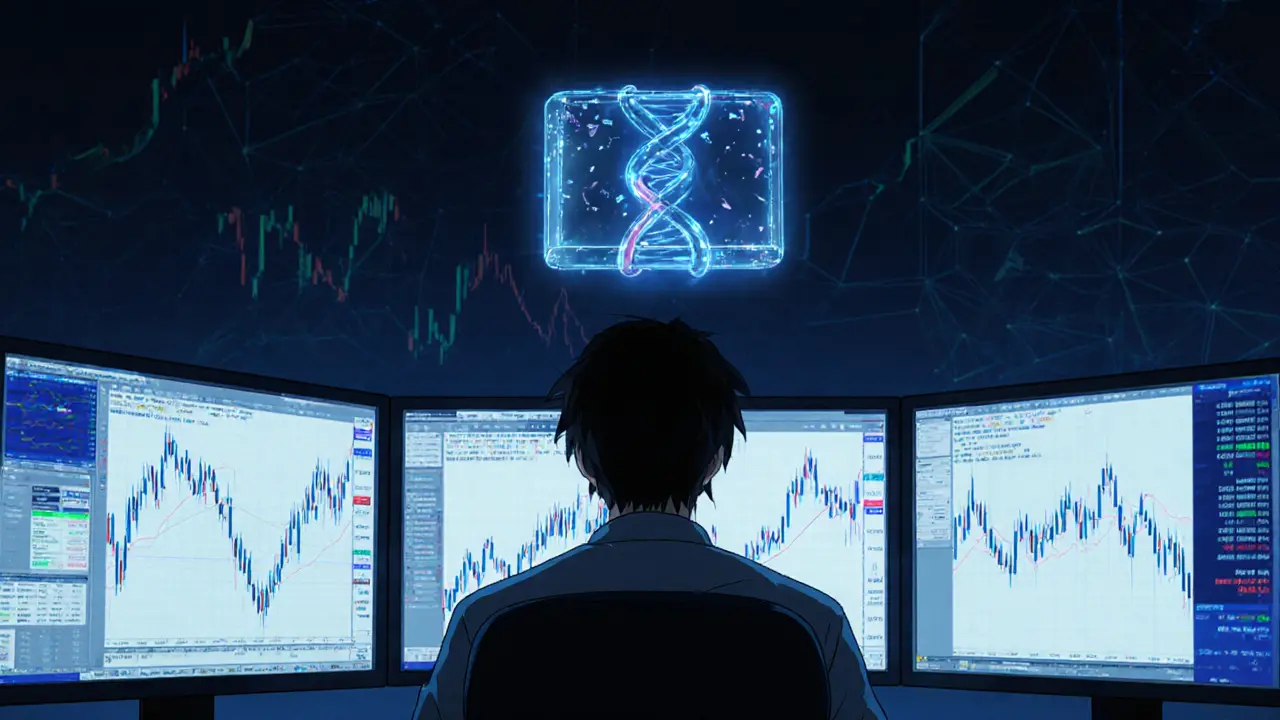
Is Anryton worth watching?
The answer depends on your angle. For investors seeking a speculative coin with massive upside, the volatility and low liquidity provide both opportunity and danger. For developers focused on privacy‑first storage of sensitive data, Anryton offers a rare combination of EVM compatibility and quantum‑ready design. The project’s roadmap mentions “scalable, secure, developer‑first Layer 1” but lacks concrete milestones, so keep an eye on any new partnership announcements, especially with healthcare firms.
One thing’s clear: the market for quantum‑resistant blockchain solutions is still in its infancy. If you believe that quantum computers will soon threaten traditional crypto, early‑stage projects like Anryton could become foundational. If you’re skeptical about the timeline, the token may remain a niche curiosity.
Key takeaways
- Anryton MOL is a utility token built on a Cosmos‑based, EVM‑compatible Layer 1 blockchain.
- The network emphasizes quantum‑ready security via lattice‑based cryptography.
- Its flagship product is a DNA‑NFT wallet for secure genetic data storage.
- Liquidity is confined to XT.com, with daily volume under $3,100 USD.
- Regulatory restrictions limit participation in major markets.
Frequently Asked Questions
What is the primary purpose of the MOL token?
MOL functions as a transaction fee token, a staking asset, and a governance token within the Anryton ecosystem. It also powers the DNA‑NFT wallet for secure health‑data storage.
Is Anryton compatible with existing Ethereum tools?
Yes. The blockchain runs a full EVM layer, so developers can use MetaMask, Remix, Hardhat, and any Solidity‑based workflow without major changes.
Where can I buy or trade MOL?
The token is listed only on XT.com (MOL/USDT pair). Major exchanges such as Binance, Coinbase, and Kraken do not list it.
How does the quantum‑ready feature work?
Anryton integrates lattice‑based cryptographic algorithms at the protocol level. These algorithms are believed to resist attacks from future quantum computers, unlike the elliptic‑curve cryptography used by most chains today.
Is the DNA‑NFT wallet ready for real‑world medical use?
As of late 2025 the wallet is still in a pilot stage. It demonstrates the concept, but no large healthcare provider has publicly adopted it yet, and regulatory compliance (HIPAA, GDPR) remains a hurdle.

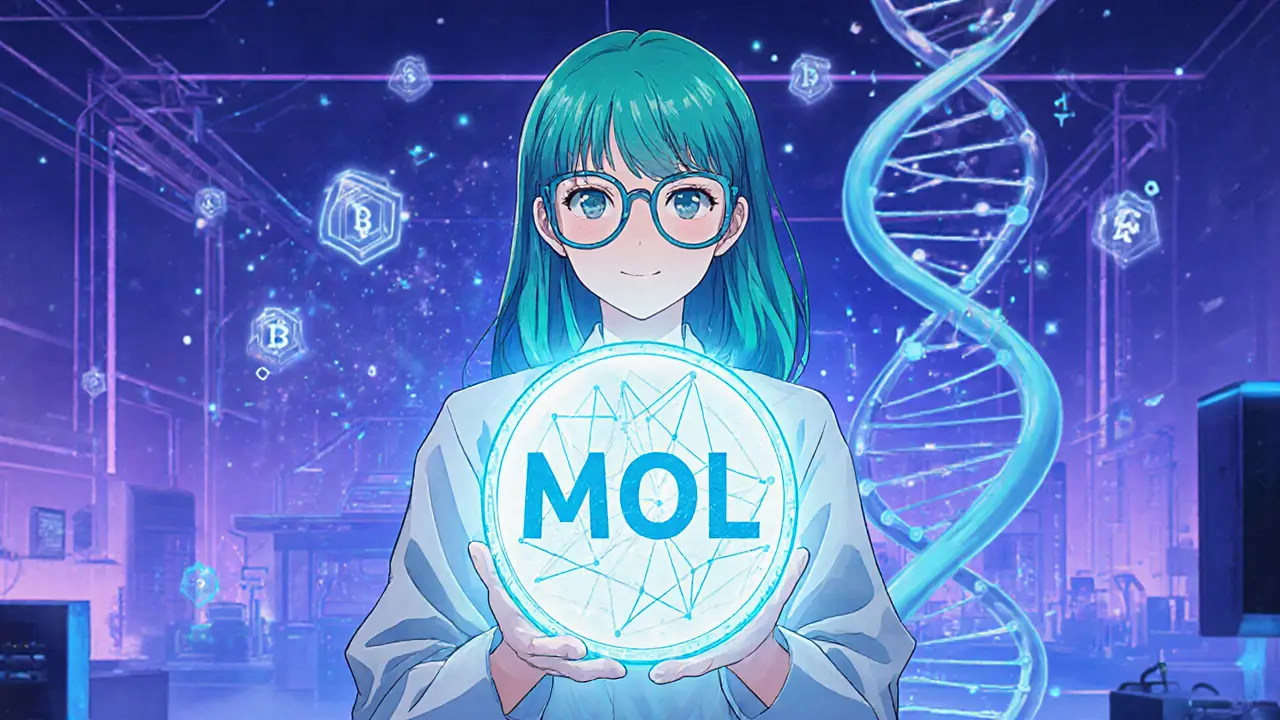

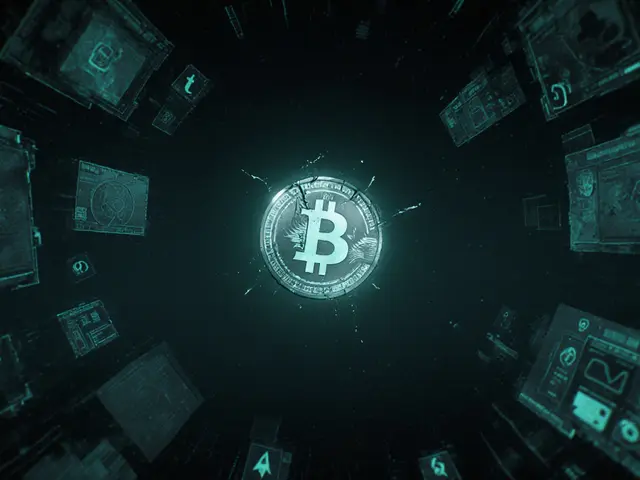
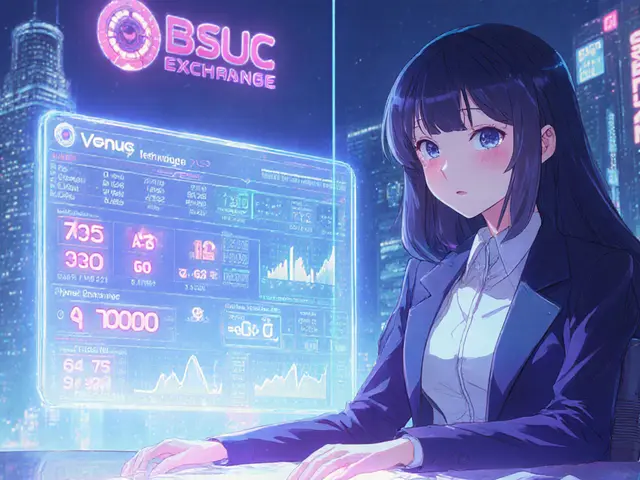

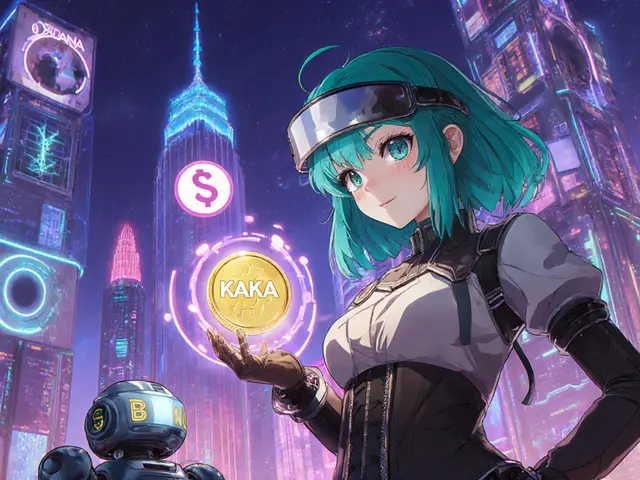
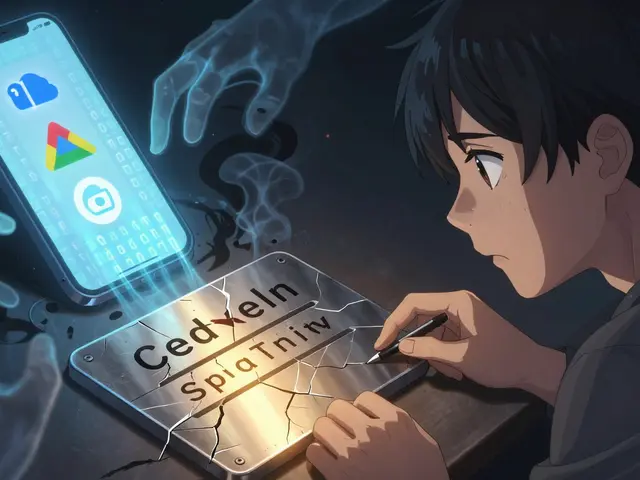




Ty Hoffer Houston
October 19, 2025 AT 20:53 PMNice deep dive into Anryton – the idea of storing genetic data on a blockchain with quantum‑ready security is pretty fascinating. The niche focus makes sense given how sensitive health info is, and the fact that they’re using Cosmos SDK means developers won’t have to rebuild everything from scratch. I’m curious how the community will grow when the only exchange is XT.com, but the tech could attract some privacy‑first labs.
Jessica Pence
October 19, 2025 AT 22:16 PMJust a heads‑up: the staking rewards are actually paid out in MOL after each block‑finality, so you’ll see them hit your wallet pretty quickly. Also, make sure you’ve enabled the “relevnt” network on your MetaMask – otherwise the transaction might fail. The docs could use a bit more detail on the lattice‑crypto integration, but the basics are there.
johnny garcia
October 19, 2025 AT 23:40 PMFrom a theoretical standpoint, the integration of lattice‑based cryptography constitutes a noteworthy advancement in blockchain resilience 🌐. Should quantum computers achieve the requisite scale, conventional elliptic‑curve systems will become obsolete; consequently, Anryton’s preemptive design could position it as a frontrunner in post‑quantum decentralized applications. 🚀
Andrew Smith
October 20, 2025 AT 01:03 AMExactly! The momentum behind quantum‑ready chains is building fast, and Anryton is riding that wave. Grab some MOL, stake it, and you’ll be part of the next big push – the upside could be massive if the tech catches on.
Joy Garcia
October 20, 2025 AT 02:26 AMListen, the moment the big pharma giants catch wind of a decentralized DNA vault, they’ll try to shut it down or swallow it whole. The whole “only XT.com” listing feels like a deliberate choke‑point, a way for the powers that be to keep a lid on truly private genetic data. Keep your eyes open – the silence is louder than any announcement.
Tom Glynn
October 20, 2025 AT 03:50 AMIn the grand tapestry of data sovereignty, each encrypted genome is a thread asserting autonomy 🌿. While skeptics whisper of hidden agendas, the very act of storing your DNA on a quantum‑resistant ledger is a statement of personal agency. Stay curious, experiment responsibly, and let the technology speak for itself 😊.
Johanna Hegewald
October 20, 2025 AT 05:13 AMYou can buy MOL only on XT.com right now.
Benjamin Debrick
October 20, 2025 AT 06:36 AMIndeed; the exclusivity of a solitary exchange – XT.com – is not merely a market anomaly; rather, it reflects a deliberate stratagem, whereby liquidity constraints serve as a crucible for speculative acumen, and the paucity of volume engenders pronounced price volatility, thereby furnishing astute participants with opportunities for arbitrage and strategic positioning.
Anna Kammerer
October 20, 2025 AT 08:00 AMOh, brilliant, because having a single exchange is exactly what every investor dreams of – no competition, no price discovery, just pure, unadulterated chaos. Good luck navigating that masterpiece of market design.
Mike GLENN
October 20, 2025 AT 09:23 AMThe Anryton project occupies a peculiar niche at the intersection of blockchain technology and biomedical data security.
Its choice to employ the Cosmos SDK and Tendermint consensus grants it rapid finality, something most proof‑of‑stake chains still struggle with.
By layering an EVM‑compatible environment atop that foundation, developers can seamlessly port Solidity contracts, reducing the learning curve dramatically.
The most innovative, albeit controversial, component is the lattice‑based cryptography, which promises resistance to future quantum attacks.
While academic research supports the theoretical robustness of such schemes, real‑world implementations remain sparse, leaving an open question about practical performance under load.
The DNA‑NFT wallet, which anchors encrypted genomic data to the chain, illustrates a visionary use‑case that could empower patients to own their genetic information.
Nevertheless, the current pilot status of that wallet indicates that regulatory compliance – particularly HIPAA and GDPR – is still an unresolved hurdle.
Market dynamics further complicate the picture: with a 24‑hour volume of roughly $3 K confined to XT.com, price slippage becomes a material risk for even modest trades.
The thin order book also explains the staggering 30‑day price swing of over 3,000 %, a figure that would dazzle any speculative trader while terrifying risk‑averse investors.
From a developer standpoint, the lack of extensive documentation and few community resources means early adopters must be prepared to navigate a steep learning curve.
Integration of the lattice cryptographic libraries, currently offered as experimental Go modules, will likely require custom tooling and thorough testing.
On the upside, the project’s roadmap hints at partnerships with healthcare providers, which, if realized, could inject much‑needed liquidity and legitimacy.
Conversely, the token’s disclaimer that it is not an investment vehicle restricts its appeal in major jurisdictions such as the United States and the United Arab Emirates.
This regulatory posture, while reducing immediate legal exposure, may also impede broader adoption and institutional backing.
In summary, Anryton represents a bold experiment in marrying quantum‑ready security with sensitive data storage, a combination that few projects currently attempt.
Whether it matures into a foundational layer for medical blockchain applications or remains a niche curiosity will depend on community engagement, regulatory navigation, and the eventual arrival of quantum computing capabilities.
BRIAN NDUNG'U
October 20, 2025 AT 10:46 AMGreat analysis! If you’re excited by the potential of quantum‑ready health data storage, now is the time to dive in, learn the tech, and maybe contribute to the community. Your enthusiasm could help turn this niche project into a mainstream solution.